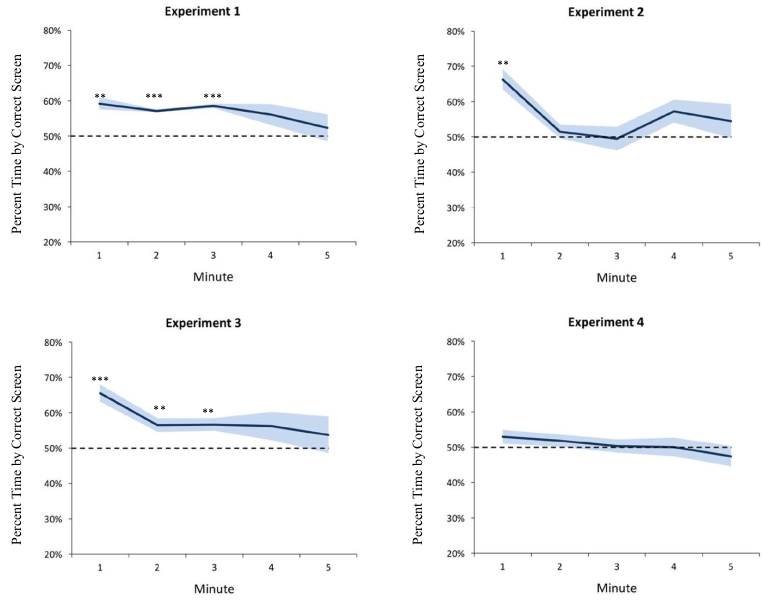Aditya Prasad, Samantha M. W. Wood, and Justin N. Wood
What are the origins of object permanence? Despite widespread interest in this question, methodological barriers have prevented detailed analysis of how experience shapes the development of object permanence in newborn organisms. Here, we introduce an automated controlled‐rearing method for studying the emergence of object permanence in strictly controlled virtual environments. We used newborn chicks as an animal model and recorded their behavior continuously (24/7) from the onset of vision. Across four experiments, we found that object permanence can develop rapidly, within the first few days of life. This ability developed even when chicks were reared in impoverished visual environments containing no object occlusion events. Object permanence failed to develop, however, when chicks were reared in environments containing temporally non‐smooth objects (objects moving on discontinuous spatiotemporal paths). These results suggest that experience with temporally smooth objects facilitates the development of object permanence, confirming a key prediction of temporal learning models in computational neuroscience.
During the Input Phase, the object performed three types of movements: (a) the object moved from the center of one display wall to the center of a different display wall, (b) the object moved back and forth repeatedly across one display wall, and (c) the object moved to one side of the display wall, remained in the same location for 45 s, and then returned to the center of the display wall. In Experiment 1, the chicks saw the object move behind occluders (d–f), whereas in Experiments 2–4, the chicks did not see the object move behind occluders (a–c). During the Test Phase, the chicks received two types of test trials. (g) On the Visible Trials, the object moved from the center of the display wall to the side of the display wall and then remained in the same location for 1–5 min. (h) On the Occluder Trials, the object moved from the center of the display wall to the side of the display wall (behind a virtual screen) and then remained in the same location for 1–5 min. (i) The object was not visible after it moved behind the screen. In Experiments 1–2, the chicks were reared with the object in panel (j), whereas in Experiments 3–4, one‐half of the chicks were reared with the object in panel (j) and one‐half of the chicks were reared with the object in panel (k)
Results on the Occluder Trials, as a function of the number of minutes after the object had disappeared from view. In Experiments 1–3, the chicks spent more time by the correct screen than the incorrect screen, indicating that the chicks could remember the location of their imprinted object after it disappeared from view. Conversely, in Experiment 4, the chicks did not spend more time by the correct screen than the incorrect screen. Error bars indicate standard error. The dashed lines show chance performance. Asterisks denote statistical significance: *p < 0.05; **p < 0.01; ***p < 0.001 (two‐tailed t tests).
OP Movie 1. A sample input phase showing objects with occlusions
OP Movie 2. A sample input phase showing objects without occlusions
OP Movie 3. A sample trial phase
OP Movie 4. A sample input phase with alternative object without occlusions.
OP Movie 5. A sample trial phase of second object

